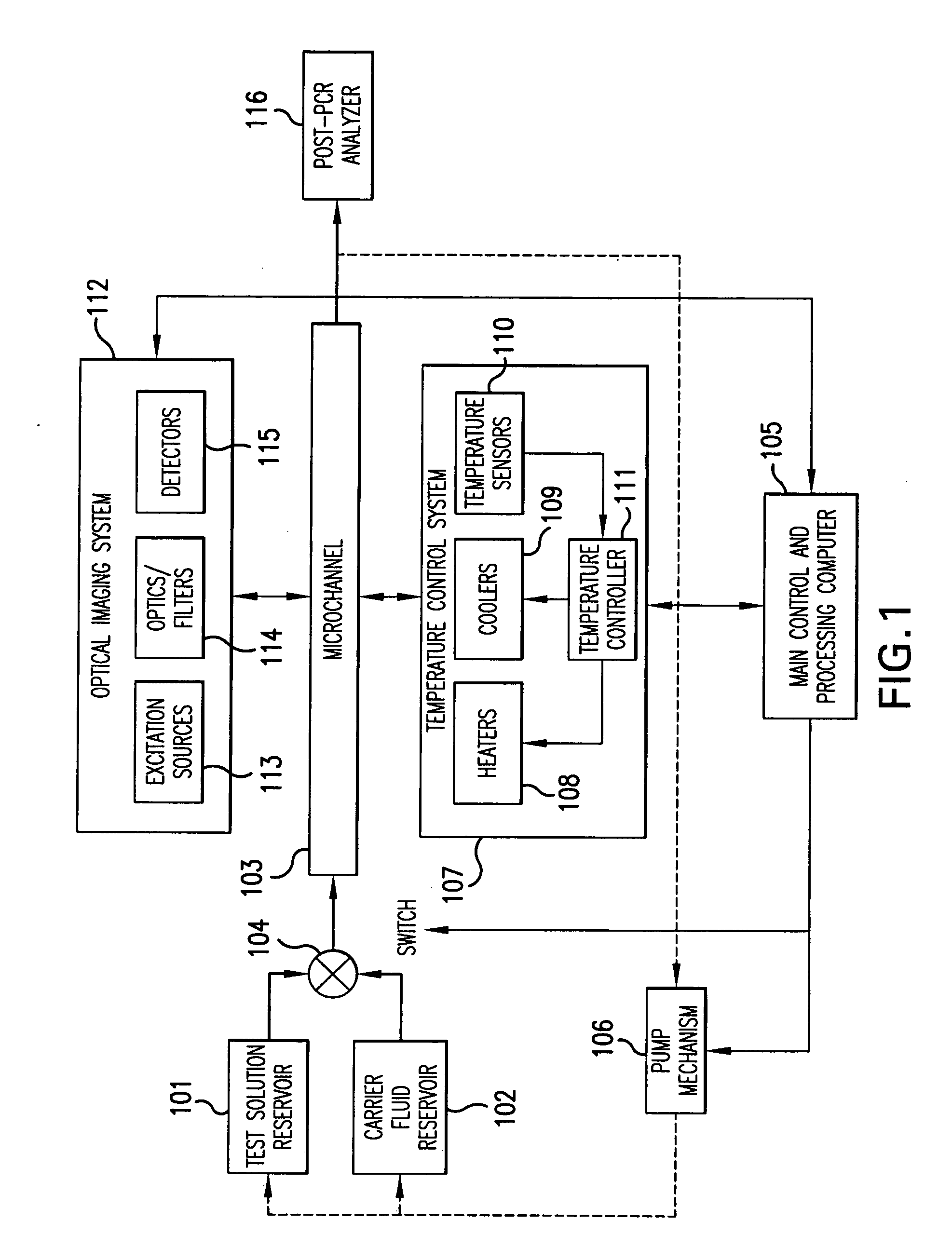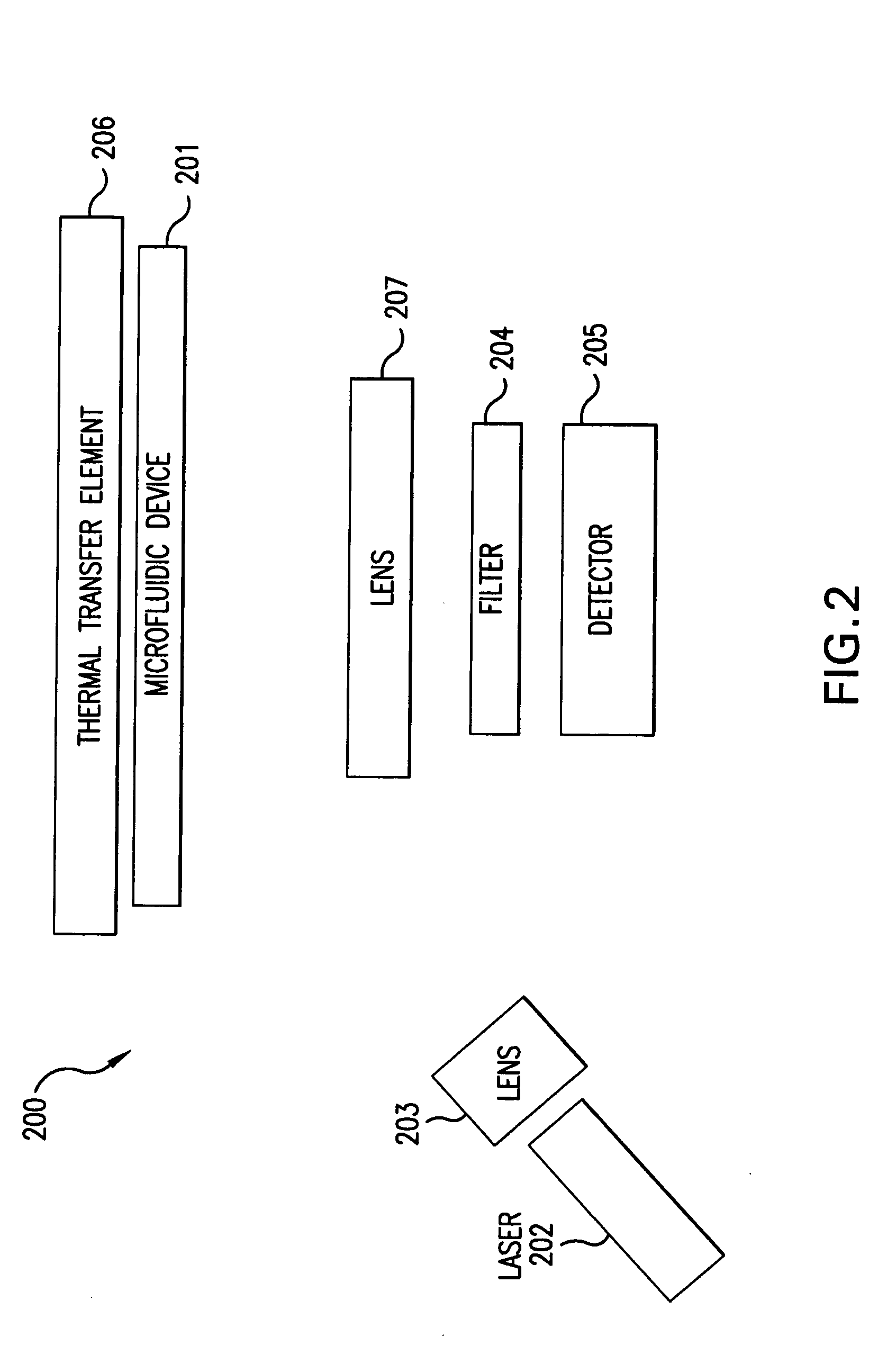Real-time PCR in micro-channels
a microchannel and real-time technology, applied in the field of amplifying nucleic acids in microchannels, can solve the problem that no one of this art has combined the ability of real-time reaction monitoring and single target molecule sensitivity in a continuous flow devi
- Summary
- Abstract
- Description
- Claims
- Application Information
AI Technical Summary
Benefits of technology
Problems solved by technology
Method used
Image
Examples
second embodiment
[0052]In a second embodiment, temperature control system 107 applies spatial temperature zones along microchannel 103 to achieve a polymerase chain reaction. In one aspect, the temperature is cycled using a thermal transfer element along portions of the microchannel 103 or the microchannels of a microfluidic device. In another aspect, the thermal transfer element cycles the temperature in portions of microchannel 103. An appropriately programmed computer controls the temperature cycling of the thermal transfer element. In accordance with this embodiment, heating and cooling are applied to portions of the channel such that a PCR temperature profile is followed. The test boluses are pumped through this reaction zone at a flow rate (speed) such that the number of PCR cycles required is achieved during the time the bolus flows from the upstream end to the downstream end of the reaction zone.
[0053]An optical imaging system 112 is included in one embodiment of the present invention to det...
third embodiment
[0067]In the methods in accordance with the present invention, the performance of real-time PCR includes monitoring the flow rate (flow speed) of the fluid in the microchannel and adjusting the flow rate as necessary to control the duration of the PCR cycling experienced by a test solution. Thus, in accordance with this embodiment, a method for performing real-time PCR comprises the steps of: a) continuously moving a bolus of test solution containing real-time PCR reagents in a channel; b) moving a carrier-fluid in the channel, sequentially alternating with a test bolus; c) cycling the temperature in a defined section of the channel in order to achieve PCR; d) measuring the intensity of the fluorescent signal at a plurality of locations along the defined section of the channel; e) measuring the average flow speed of the fluid in the channel; and f) adjusting the flow rate of the fluid to control the duration of the PCR cycling.
[0068]In one embodiment, the flow rate is monitored and ...
PUM
| Property | Measurement | Unit |
|---|---|---|
| temperature | aaaaa | aaaaa |
| temperature | aaaaa | aaaaa |
| temperature | aaaaa | aaaaa |
Abstract
Description
Claims
Application Information
 Login to View More
Login to View More - R&D
- Intellectual Property
- Life Sciences
- Materials
- Tech Scout
- Unparalleled Data Quality
- Higher Quality Content
- 60% Fewer Hallucinations
Browse by: Latest US Patents, China's latest patents, Technical Efficacy Thesaurus, Application Domain, Technology Topic, Popular Technical Reports.
© 2025 PatSnap. All rights reserved.Legal|Privacy policy|Modern Slavery Act Transparency Statement|Sitemap|About US| Contact US: help@patsnap.com



